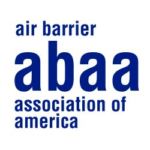
- This event has passed.
Designing Rough Openings for Proper Drainage and Drying
May 19, 2022 @ 1:00 PM - 2:00 PM EDT
Live webinar sponsored by the Air Barrier Association of America
Rough openings are penetrations into the building’s envelope, fitted with fenestrations that leak or will leak. It is critical to properly direct those leaks out of the enclosure. Materials specified and used for rough openings include tapes, sealants or flashing materials that are water, air, water vapor tight or vapor open. When detailed and installed correctly, most of these materials prevent water from entering into the interstitial wall cavities. This allows the “leaks” to drain out of the building enclosure. Tapes, sealants and flashing components can fail over time. Improper installation allows water intrusion, trapped by vapor impermeable systems. By utilizing vapor open systems for rough opening materials, water that was once trapped by impermeable flashing systems can escape via vapor diffusive drying. This presentation will describe failures, correct installation methods and testing of rough opening flashing systems. Addresses current research on vapor permeable rough opening systems and how permeability enhances rough opening assembly performance.
Learning Objectives:
- Explain rough opening installation systems as described by published guidelines.
- Understand rough opening testing and determine proper sequencing for rough opening installation.
- Recognize drainage and drying mechanisms and the benefits of permeable rough opening systems.
- Learn the differences between vapor tight and vapor permeable rough opening systems.
 Scott Wood
Scott Wood
Scott D. Wood is the Senior Building Scientist at VaproShield, providing product QA/QC and investigations/testing of material properties. As a building scientist he provides technical support for the company’s representatives, clients and assists in the development of product literature and presentations.
Scott is President of SWA Consulting. As an ITC certified Level III Thermographer with decades of experience performing condition monitoring and building applications of thermography. He has many publications in areas of both thermography and building science. Mr. Wood provides investigations, consulting, presentations and training in Building Science Thermography. Since his creation of the course in 2003 he provides the only 32 hour Building Science Thermography class for Level I and Level II that provides instruction in the use of infrared thermography in building applications.
He is involved in many organizations regarding thermography and building science including; a founding member, the Director of Building Science and treasurer of the International Association of Certified Thermographers (IACT), active voting member for ASTM International C16 and C6 committees.
